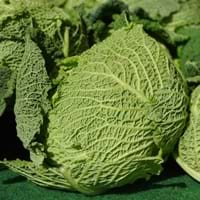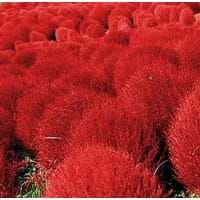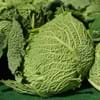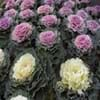Life Span
Biennial
Annual
Type
Vegetable
Ornamental Plants, Shrubs
Origin
Southern Europe, Western Europe, Mediterranean
Eastern Europe, Western Asia
Types
Not Available
Kochia Indica, Neokochia californica
Habitat
Cultivated Beds, Moist Soils
gardens, Temperate Regions
USDA Hardiness Zone
6-8
3-11
Sunset Zone
A1, A2, A3, H1, H2, 1a, 1b, 2a, 2b, 3a, 3b, 4, 5, 6, 7, 8, 9, 10, 11, 12, 13, 14, 15, 16, 17, 18, 19, 20, 21, 22, 23, 24
A1, A2, A3, H1, H2, 1a, 1b, 2a, 2b, 3a, 3b, 4, 5, 6, 7, 8, 9, 10, 11, 12, 13, 14, 15, 16, 17, 18, 19, 20, 21, 22, 23, 24
Habit
Rosette/Stemless
Upright/Erect
Flower Color
Light Purple, Yellow
Not Available
Flower Color Modifier
Bicolor
Bicolor
Fruit Color
Not Available
Not Available
Leaf Color in Spring
Green, Dark Green
Light Green
Leaf Color in Summer
Light Green, Blue Green
Not Available
Leaf Color in Fall
Light Green, Blue Green
Gray Green, Burgundy, Crimson
Leaf Color in Winter
Light Green, Blue Green
Light Green
Leaf Shape
Ovate elongated
Linear
Plant Season
Spring, Summer, Fall
Fall
Sunlight
Full Sun, Partial Sun
Full Sun
Type of Soil
Loam, Sand
Clay, Loam, Sand
The pH of Soil
Acidic
Acidic, Neutral, Alkaline
Soil Drainage
Well drained
Average
Bloom Time
Spring, Late Spring, Early Summer
Summer
Tolerances
Drought
Drought
Where to Plant?
Container, Ground
Ground
How to Plant?
Cuttings, Seedlings
Stem Cutting, Transplanting
Plant Maintenance
Medium
Medium
Watering Requirements
Requires regular watering
occasional watering once established, Requires consistently moist soil
In Summer
Lots of watering
Moderate
In Spring
Moderate
Moderate
In Winter
Average Water
Less Watering
Soil Type
Loam, Sand
Well drained
Soil Drainage Capacity
Well drained
Loamy, Well drained
Sun Exposure
Full Sun, Partial Sun
Bright direct sunlight
Pruning
Remove damaged leaves, Remove dead branches, Remove dead leaves
Pinch or prune as they grow to promote branching and bushiness, Remove dead branches
Fertilizers
All-Purpose Liquid Fertilizer
All-Purpose Liquid Fertilizer
Pests and Diseases
Bacterial leaf spot, Bacterial soft rot, Beet armyworm, Cabbage looper, Cabbageworm, Flea Beetles, Fungal leaf spots
Aphids, Mosquito
Plant Tolerance
Drought
Heat Tolerance, Humidity
Flower Petal Number
Single
Not Available
Foliage Texture
Bold
Fine
Foliage Sheen
Matte
Matte
Attracts
Bugs, Rabbits
Butterflies, Leaf Hoppers
Allergy
Nausea
Eye irritation, Respiratory problems
Aesthetic Uses
Not Available
Beautification, Landscape Designing
Beauty Benefits
Not Available
For treating wrinkles, Making cosmetics, Removes dandruff, Skin cleanser
Edible Uses
Yes
Sometimes
Environmental Uses
Air purification
Provides ground cover
Medicinal Uses
Nutrients
Diabetes, Hypotensive, Obesity
Part of Plant Used
Whole plant
Leaves
Other Uses
Used in chopped mixed salad, Used in curries, soups, stews
Cattle Fodder, Sauces, Traditional medicine, Used for fragrance, Wood log is used in making fences
Used As Indoor Plant
No
No
Used As Outdoor Plant
Yes
Yes
Garden Design
Bedding Plant, Container, Edible, Herb / Vegetable
Groundcover
Botanical Name
Brassica oleracea
BASSIA scoparia
Common Name
Alcosa Cabbaga, Savoy Cabbage
Burningbush, Kochia
In Hindi
Savoy Cabbage
Bassia scoparia
In German
Wirsing
Besen-Radmelde
In French
Savoy Cabbage
Bassia scoparia
In Spanish
col de col rizada
Kochia scoparia
In Greek
Savoy Cabbage
Bassia scoparia
In Portuguese
Savoy Cabbage
Bassia scoparia
In Polish
Kapusta włoska
Mietelnik żakula
In Latin
Brassica Sabaudiae
Bassia scoparia
Phylum
Embryophyta
Angiosperms
Class
Eudicotyledones
Magnoliopsida
Order
Brassicales
Caryophyllales
Family
Brassicaceae
Chenopodiaceae
Clade
Angiosperms, Eudicots, Rosids
Angiosperms, Eudicots
Tribe
Not Available
Not Available
Subfamily
Not Available
Camphorosmoideae
Number of Species
Not Available
Not Available
Season and Care of Savoy Cabbage and Kochia
Season and care of Savoy Cabbage and Kochia is important to know. While considering everything about Savoy Cabbage and Kochia Care, growing season is an essential factor. Savoy Cabbage season is Spring, Summer and Fall and Kochia season is Spring, Summer and Fall. The type of soil for Savoy Cabbage is Loam, Sand and for Kochia is Clay, Loam, Sand while the PH of soil for Savoy Cabbage is Acidic and for Kochia is Acidic, Neutral, Alkaline.
Savoy Cabbage and Kochia Physical Information
Savoy Cabbage and Kochia physical information is very important for comparison. Savoy Cabbage height is 25.40 cm and width 30.50 cm whereas Kochia height is 120.00 cm and width 90.00 cm. The color specification of Savoy Cabbage and Kochia are as follows:
Savoy Cabbage flower color: Light Purple and Yellow
Savoy Cabbage leaf color: Green, Dark Green
Kochia flower color: Not Available
- Kochia leaf color: Light Green
Care of Savoy Cabbage and Kochia
Care of Savoy Cabbage and Kochia include pruning, fertilizers, watering etc. Savoy Cabbage pruning is done Remove damaged leaves, Remove dead branches and Remove dead leaves and Kochia pruning is done Pinch or prune as they grow to promote branching and bushiness and Remove dead branches. In summer Savoy Cabbage needs Lots of watering and in winter, it needs Average Water. Whereas, in summer Kochia needs Moderate and in winter, it needs Less Watering.





